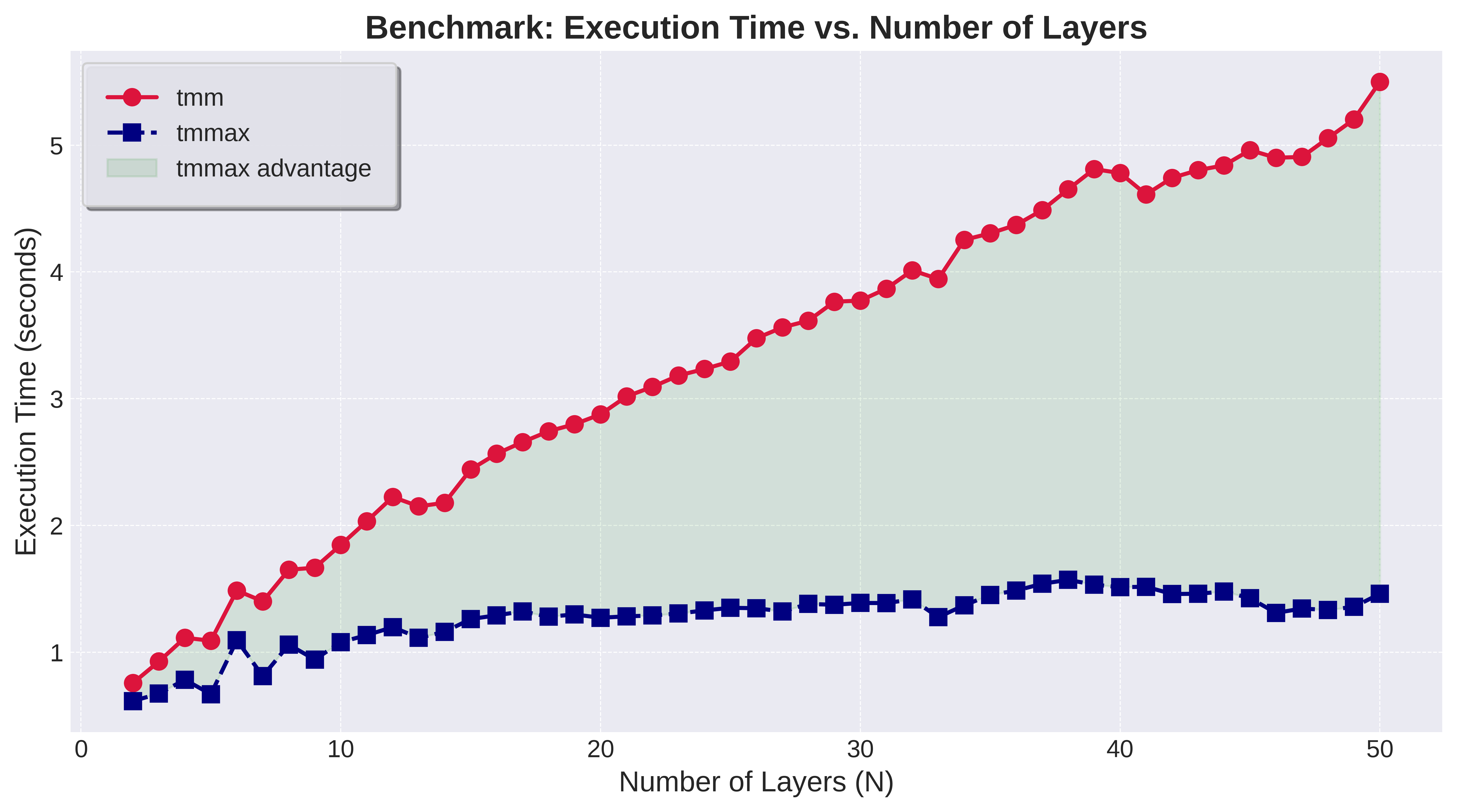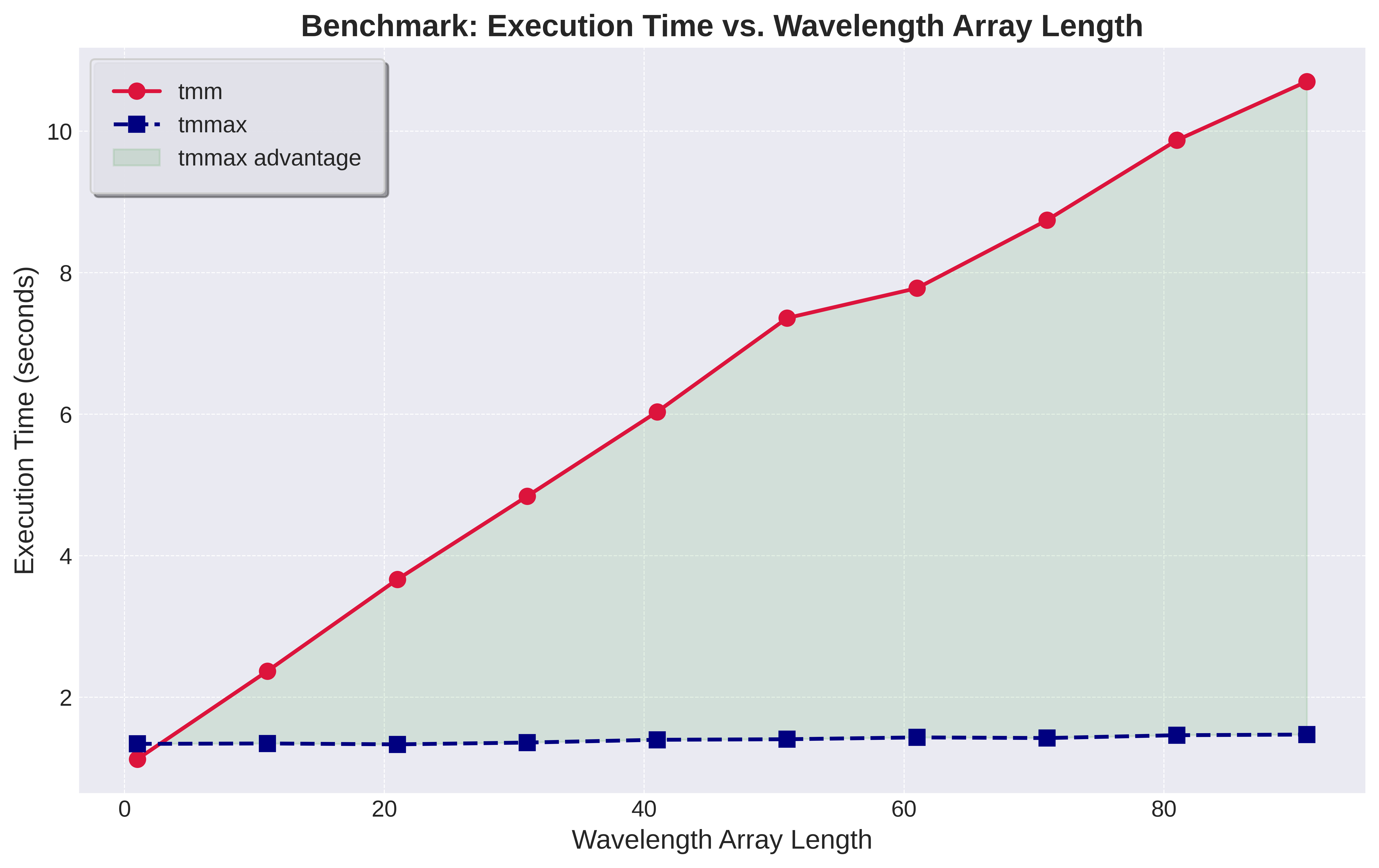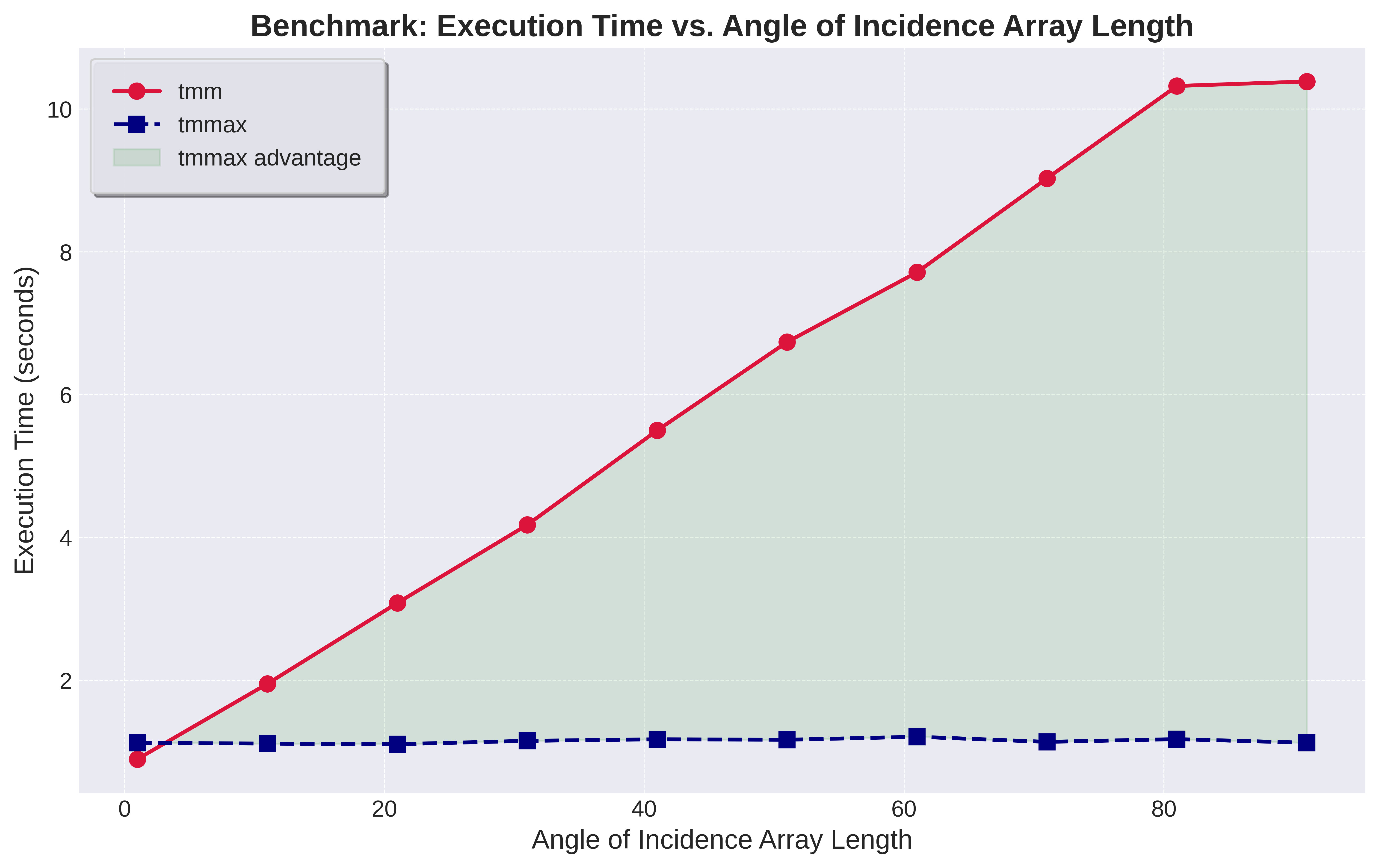tmmax is a highly optimized Python library for simulating the optical properties of multilayer thin films using the Transfer Matrix Method (TMM). This library leverages the power of JAX, a modern numerical computing library, to deliver high-performance computations, automatic differentiation, and seamless GPU/TPU acceleration. By exploiting JAX’s vectorized operations and just-in-time (JIT) compilation, tmmax achieves unprecedented efficiency and speed in modeling complex multilayer systems.
- Speed: JAX's JIT compilation accelerates TMM calculations, enabling large-scale simulations to run in a fraction of the time compared to traditional methods.
- Vectorization:
tmmaxsupports vectorized calculations for reflectance and transmittance over multiple wavelengths and angles of incidence, enhancing efficiency during parameter sweeps. - Automatic Differentiation: With JAX's automatic differentiation,
tmmaxcan compute gradients efficiently, facilitating the optimization of thin film designs. - GPU/TPU Support:
tmmaxcan offload computations to GPUs or TPUs, making it ideal for resource-intensive optical simulations.
The benchmark comparison demonstrates a significant computational efficiency gain when using the tmmax package over the widely used tmm library, especially for simulations involving a large number of layers. As the number of layers increases, the execution time for tmm scales linearly, demonstrating a performance bottleneck, while tmmax exhibits near-constant execution time beyond a small initial rise, suggesting superior handling of computational complexity. (Despite the increasing number of layers, both the wavelength array and theta array lengths were kept constant at 20, ensuring the results purely reflect the scaling behavior with respect to the number of layers.)
You can install tmmax via PyPI:
pip3 install tmmaxHere is a basic example of how to use tmmax:
from tmmax.tmm import tmm
# Define your multilayer stack and simulation parameters
material_list = ["Air", ... , "SiO2", ...]
thickness_list = jnp.array(...)
wavelength_arr = jnp.array(...)
angle_of_incidences = jnp.array(...)
polarization = 's' # or 'p'
result = tmm(material_list = material_list,
thickness_list = thickness_list,
wavelength_arr = wavelength_arr,
angle_of_incidences = angle_of_incidences,
polarization = polarization)For detailed usage instructions, refer to the documentation and examples provided in the repository.
If you use or reference any of the templates provided in this repository, please cite it as follows:
@software{tmmax,
author = {Bahrem Serhat Danis},
title = {tmmax: High-Performance Transfer Matrix Method with JAX},
version = {0.0.2},
url = {https://github.com/bahremsd/tmmax},
year = {2024}
}


